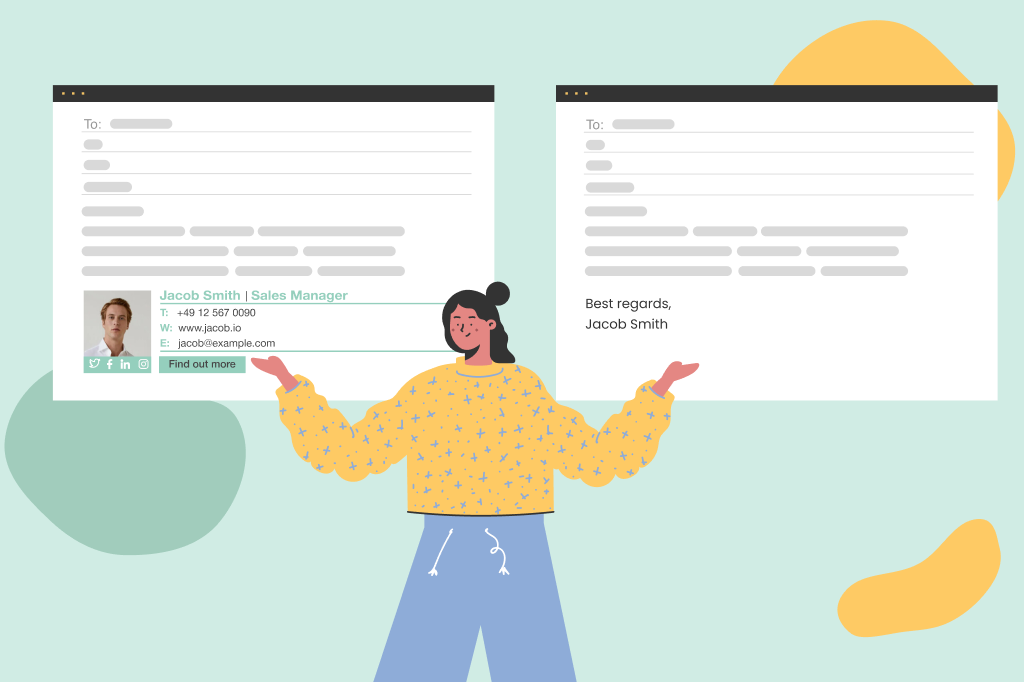
The email has become a ubiquitous form of communication in both personal and professional settings. As such, it is important to be mindful of email etiquette to maintain a positive and professional image.
One often-overlooked aspect of email communication is the sign-off – the closing words that come just before your name or email signature.
A well-crafted sign-off can leave a lasting impression, reinforce your message, and convey the desired tone.
In this article, we will explore unique insights, perspectives, and advice on crafting the perfect email sign-off, ensuring that your emails end with style.
Understanding the Purpose of the Sign-Off
The sign-off serves several important functions in email communication:
- Conveying politeness and professionalism. A well-chosen sign-off demonstrates respect for the recipient, adhering to the norms of professional communication.
- Reflecting the tone of the email. The sign-off should be consistent with the overall tone of the email, whether it is formal, informal, serious, or lighthearted.
- Reinforcing the message and call-to-action. A strong sign-off can leave a lasting impression on the reader, serving as a final reminder of the email’s main points or desired call to actions.

Factors to Consider When Crafting Your Sign-Off
To create a sign-off that leaves a positive impression, consider the following factors:
- The relationship with the recipient. Tailor your sign-off based on your familiarity with the recipient. For example, a formal sign-off may be more appropriate when emailing a potential client or higher-up, whereas a casual sign-off can be used with colleagues or friends.
- The purpose of the email. The sign-off should align with the intent of the email, whether it is informational, persuasive, or action-oriented. For example, a persuasive email might warrant a more assertive sign-off, whereas a simple update might call for a more relaxed approach.
- Cultural differences and sensitivities. When communicating with recipients from different cultural backgrounds, it is essential to be aware of and respect their norms and preferences. Some cultures may prefer a more formal tone, while others may appreciate a warmer, more personal touch.
Examples of Effective Sign-Offs
Here are some examples of sign-offs that can be used in various situations:
Formal sign-offs for professional settings:
- “Sincerely” – A classic choice, suitable for most professional emails.
- “Best regards” – A versatile option that balances formality and warmth.
- “Yours faithfully” – A more traditional choice, often used in formal correspondence.
Casual sign-offs for less formal situations:
- “Best” – A simple and friendly option, appropriate for less formal emails.
- “Cheers” – A relaxed, informal choice, often used among colleagues or friends.
- “Take care” – A warm and caring sign-off, suitable for personal or friendly emails.
Creative sign-offs to showcase personality:
- “Keep on shining” – A positive and uplifting option, ideal for messages of encouragement or motivation.
- “Stay awesome” – A playful and lighthearted choice, perfect for more casual emails or to express appreciation.
- “Onward and upward” – A motivating sign-off, signaling progress and forward momentum.
Common Mistakes to Avoid in Email Sign-Offs
To maintain professionalism and avoid inadvertently offending your recipient, be cautious of these common mistakes.
Being too informal or familiar. While a casual email sign-off can be appropriate in some cases, it is important not to assume that all recipients will appreciate an overly informal tone. When uncertain, it is better to choose a more formal approach.
Overusing humor or sarcasm. Although humor can be an effective tool for building rapport, it can also be misinterpreted or fall flat in written communication. Be cautious when using humor in your sign-offs, especially with recipients who may not be familiar with your sense of humor.
Inconsistent use of capitalization and punctuation. Ensure that your sign-off follows standard rules of capitalization and punctuation. For example, capitalize the first letter of each word in a multi-word sign-off (e.g., “Best Regards” instead of “best regards”) and avoid using excessive punctuation or emojis.
Not including contact information. Although your contact information may be included in your email signature, it is still important to ensure that your sign-off is followed by a clear and consistent presentation of your name, title, and relevant contact details.
The Power of Personalization in Email Sign-Offs
Personalizing your email sign-offs can create a stronger connection with your recipient and make your message more memorable. Here are some tips for adding a personal touch to your sign-offs.
Use the recipient’s name. Addressing the recipient by their name in your sign-off can demonstrate that you have taken the time to consider them as an individual, rather than using a generic greeting. For example, instead of closing with “Best Regards,” try “Best Regards, [Recipient’s Name].”
Tailor your professional email sign-off based on the email content. If your email discusses a specific topic or event, you can incorporate this into your sign-off to create a more cohesive and engaging message. For example, if your email is about an upcoming conference, you might close with “Looking forward to seeing you at the conference!”
Show gratitude or appreciation. Expressing gratitude or appreciation for the recipient’s time, input, or assistance can create a positive and lasting impression. For example, if the recipient has provided valuable feedback or support, consider closing with “Thank you for your invaluable input” or “I appreciate your assistance.”
Use positive language. Incorporating positive language in your sign-off can leave the recipient with a favorable impression of your message and create a more uplifting tone. For example, phrases like “Wishing you a great day” or “Stay positive” can add warmth and positivity to your sign-off.

Maintaining Consistency in Email Sign-Offs
While personalization and creativity are important, it’s also essential to maintain a consistent tone and style in your email sign-offs to reinforce your professional image. Consider the following tips to achieve consistency.
Develop a “default” sign-off. Having a go-to sign-off that you use in the majority of your emails can help you establish a consistent and recognizable style. Choose a sign-off that reflects your desired tone and level of formality, and adapt it as needed based on the specific context of each email.
Create a template for different situations. If you frequently send emails for specific purposes, such as follow-up messages, project updates, or meeting requests, consider developing a template with a designated sign-off for each situation. This can save you time and ensure that your emails maintain a consistent tone.
Keep a list of preferred sign-offs. To avoid the temptation to use overly informal or inappropriate sign-offs, keep a list of preferred options that align with your professional image. Refer to this list when crafting your emails to ensure that your sign-offs remain consistent and appropriate for your audience.
By incorporating personalization, maintaining consistency, and avoiding common pitfalls, you can craft email sign-offs that effectively convey your intended tone and leave a lasting impression on your recipients. Combining these strategies with a well-designed email signature will help you elevate your professional and business communication and ensure that your emails end with style.
Customizing Your Email Signature
In addition to crafting a thoughtful sign-off, a well-designed email signature can enhance your professional image and make it easy for recipients to get in touch with you. Here are some tips for creating an effective email signature.
The benefits of a professional email signature:
- Reinforces your brand and professional identity.
- Provides essential contact information, making it easy for recipients to connect with you.
- Can help build trust and credibility with clients, colleagues, and partners.
Elements to include in your email signature:
- Name and title. Clearly display your full name and job title to establish your identity and role within your organization.
- Company and department. Include your company name and, if applicable, the department you work in, to provide context for your position.
- Contact information. Offer multiple ways for recipients to reach you, such as your work email, phone number, and office address.
- Social media profiles. Add links to relevant professional social media accounts, such as LinkedIn, to facilitate networking and showcase your online presence.
Email signature design tips
- Use of fonts and colors. Stick to one or two professional fonts and use a limited color palette that aligns with your company’s branding. Avoid overly ornate or distracting fonts and colors.
- Formatting and layout. Keep your signature visually clean and easy to read, with a clear hierarchy of information. Use whitespace and dividers to separate different elements.
- Including a professional headshot. If appropriate, consider adding a high-quality, professional headshot to personalize your email signature and help recipients put a face to your name.
Conclusion
The perfect email sign-off can leave a lasting impression and help ensure that your message is received in the intended manner. By considering factors such as the relationship with the recipient, the purpose of the email, and cultural sensitivities, you can craft a sign-off that is both stylish and effective.
Additionally, a well-designed email signature can enhance your professional image and make it easy for recipients to connect with you. With these insights, perspectives, and advice in hand, you can confidently send your emails knowing that they will end with style. We encourage you to put these tips into practice and share your own experiences with crafting the perfect email sign-off.